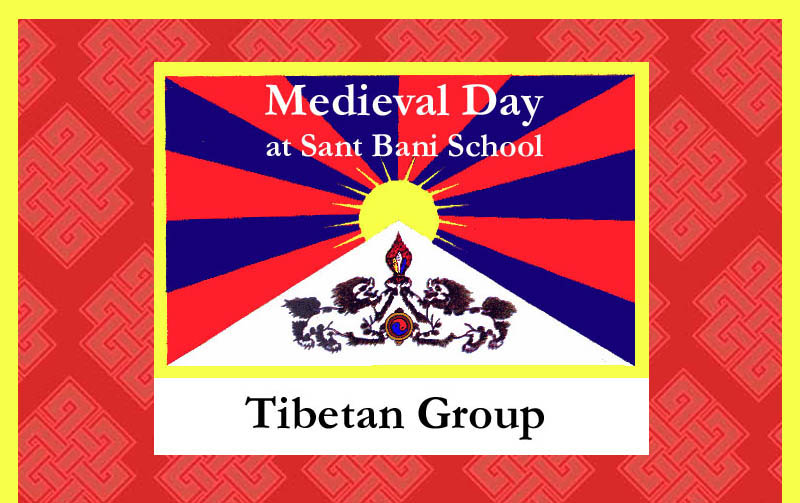Mimes and monks, peddlers and peasants, Sant Bani School will become a Medieval town for a day. Every three years the entire school community comes together to celebrate a particular theme. This event coordinates lessons from all disciplines and brings together faculty, parents and students of all ages. It is an exciting, high-energy, integrated experience that lasts all day; preparation will take all fall. Discussion with alumni proves these special days to be memorable events, often considered the highlight of the year. Recent themes have been International Day, Columbus/Encounters Day, and Renaissance Day. These include a full day in costume, with games, songs, prayers, commerce and rituals performed throughout the day. A mid-day meal, in keeping with the theme, is a highlight.
This site features the "Tibetan Group." The members, faculty and senior leader will be chosen in September.
Planning
At a meeting in June, staff members presented their thoughts, often made in consultation with students. They arrived at the decision to have a Medieval Day on November 10, 2006. To define the period we chose the time between 1066-1485 C.E. as the most agreed upon by scholars (but 1066-1560 C.E. are the dates accepted by others, ending with the downfall/ destruction of European monasteries). We recognized the value of expanding our scope beyond the Euro-centric view but we also felt there was value in maintaining the point of view of our own culture. We wanted there to be a component that we could share with others, such as invitations for community schools and neighbors from an assisted living community. It would be an outdoor event with a large tent set up on the playing field.
Staff and students could choose specific culture regions. Adding non-European elements could be valuable, especially in the cases of the Islamic world and Asia. We could learn about the present times by looking back. These cultures have complex and varied cultures during the time of the European Middle Ages.
Social stratification occurs in all cultures and is an important component. This would be achieved by drawing names from a hat in approximate proportions to those in the actual culture. If each of the 17 members of the senior class served as a captain, there would be teams of 11 students each, so that the whole school could be included. We would have daily Morning Sessions and Art Blocks for the first quarter revolve around the theme. There would be skits, and games for field days.
A second planning meeting was held in mid-July. The committee, consisting of interested volunteers from the staff and administration, agreed on the schedule and other details. Some guidelines for each group were set. Each group would have a public presentation, a short reading or prayer in the local language, a game, song, and a greeting. Everyone would come dressed in a way appropriate to his or her culture and station in life. Lunch will also be appropriate to culture and status.
There will be more careful planning in the late August meetings and details will be shared and refined, as we get closer to the big day.
The Tibetan Group
This is under construction. More will be added as groups are chosen and plans are made. Stay tuned!

